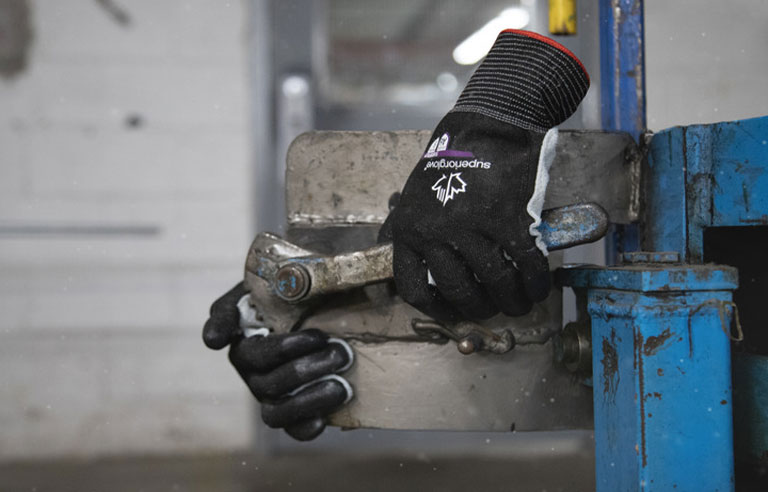Workplace Hand Injuries: Did You Know PPE is the Last Line of Defense?

By Superior Glove, leading safety glove innovator
Every year, millions of workers are injured on the job. A significant number of their injuries are hand related. Depending on the severity, these injuries not only have huge medical costs associated with them, but they’re also expensive in terms of lost productivity and wages. The good news: Hand injuries are the No. 1 preventable industrial injury type. So, if they’re preventable, why are they still so common?
The truth is, reducing incidences of hand injuries in a workplace doesn’t start with wearing appropriate hand protection – though it’s one of the necessary tools to prevent such occurrences.
PPE as the last line of defense
When viewed through the lens of the Hierarchy of Controls, personal protective equipment is the last line of defense.

The Hierarchy of Controls identifies the safety controls many industries use to protect workers by minimizing or eliminating exposure to hazards. They start from the most effective measures at the top, to the least effective at the bottom. These are elimination, substitution, engineering controls, administrative controls and PPE.
So why is PPE the last line of defense? Aren’t gloves, sleeves, and other PPE important to protect workers from the risk of hazards?
The answer isn’t a simple “Yes” or “No.” Although PPE such as gloves and sleeves offer protection against cuts, burns, abrasions, chemicals, impacts, crushing, vibration or other hazards, they cannot protect workers from all workplace dangers. This includes risks of prolonged exposures to hazards in their environment, injuries caused by mishandling equipment, tripping, falling, and other risks that can be mitigated or eliminated using other control measures. That said, if all other controls fail, PPE may be the very thing that saves a worker from serious injury.
Essentially, it’s important to follow the hierarchy in order, starting from the top, rather than choosing the easiest control measure. And although these controls can be implemented in phases over time, multiple levels of the hierarchy can be adopted simultaneously depending on the organization’s logistical necessities. Although, no one step should be completely ignored to realize the true effects of this system. Ultimately, reducing the incidence of hand injuries in a workplace is best achieved through a process of reevaluating and redesigning your safety program using the Hierarchy of Controls. To learn about each stage of the Hierarchy of Controls in more detail, check out Workplace Safety: Why PPE is the Last Line of Defense.
Next steps
If you’re looking to overhaul hand safety at your organization in a way that addresses all safety controls, not only PPE, get started with Superior Glove’s free onsite Hand Safety Program, available here.
About Superior Glove
Superior Glove is a leading innovator in the design and manufacture of safety gloves, sleeves and complementary PPE. We believe that workers shouldn’t have to choose between comfort and safety, so we innovate to fit the protection workers need into comfortable PPE they’ll want to wear. We design and test hand safety products in-house to ensure quality and protection and offer free resources and services to help organizations develop safety programs that go beyond PPE.
Superior Glove is headquartered in Ontario, Canada. We have team members across Canada, the United States and Mexico serving customers globally. We own and operate four manufacturing facilities; three in Canada and one in Honduras – vertically integrated from fiber to final product in several categories.
Post a comment to this article
Safety+Health welcomes comments that promote respectful dialogue. Please stay on topic. Comments that contain personal attacks, profanity or abusive language – or those aggressively promoting products or services – will be removed. We reserve the right to determine which comments violate our comment policy. (Anonymous comments are welcome; merely skip the “name” field in the comment box. An email address is required but will not be included with your comment.)


